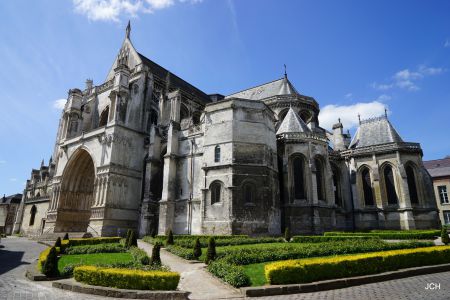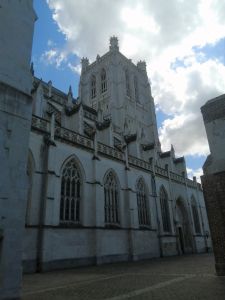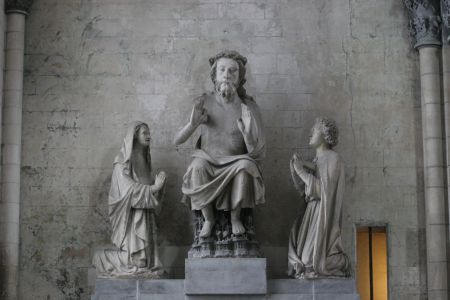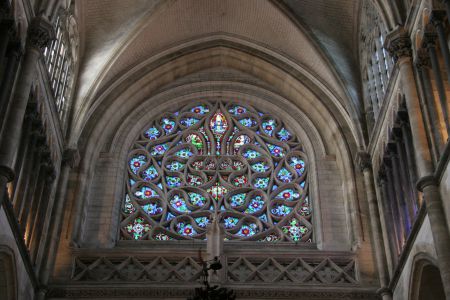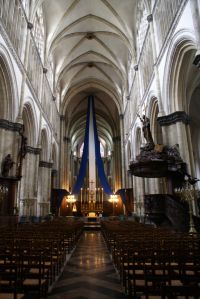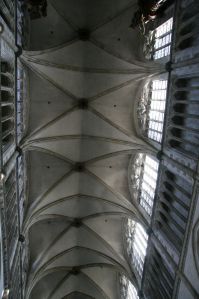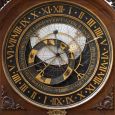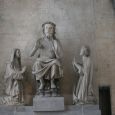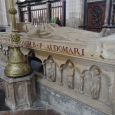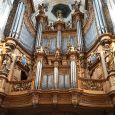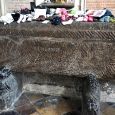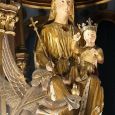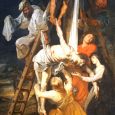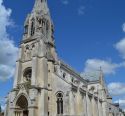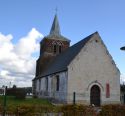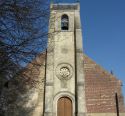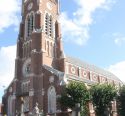Cathedral | XIII | Gothic | Catholic Church






Map
Opening hours
01 April - 31 October
Mon 8.00 - 18.00
Tue 8.00 - 18.00
Wed 8.00 - 18.00
Thu 8.00 - 18.00
Fri 8.00 - 18.00
Sat 8.00 - 18.00
Sun 8.00 - 18.00
01 November - 31 March
Mon 8.00 - 17.00
Tue 8.00 - 17.00
Wed 8.00 - 17.00
Thu 8.00 - 17.00
Fri 8.00 - 17.00
Sat 8.00 - 17.00
Sun 8.00 - 17.00
Cathedral welcome desk open every day from 2pm to 5pm (winter) and 6pm (summer)
Guided tour
Tourisme Saint-Omer • +33 3 21 98 70 00
Les amis de la cathédrales : +33 6 08 93 75 08 • animations@cathedrale@orange.fr
Religious offices
week : 8.30 am
Sunday : 10.30 am
Description
This jewel of medieval architecture has a long history. Audomar (Omer), the saint who evangelised the region, bishop of Therouanne in the 7th century, built a chapel dedicated to the Virgin Mary in the village of Sithiu in the marshes of the river Aa (future town of Saint Omer), where he was buried.
Continuing his work, the canons built a romanesque church in the 11th century and it became an important artistic and interlectual centre. From the 13th century onwards i twas transformed and became an exceptional gothic building, one of the most sumptuous witnesses to gothic art, in the Northern Provinces.
In the 16th century the collegial church became a cathedral following the destruction, by Charles Quint, of the town and bishopric of Thérouanne, and the transfer of a part of the episcopal territory. But the decision to reinstate Arras as a bioshopric with the Concordat of 1801, relegated the cathedral to a simple church. In the 19th century, to honour the vitality of the pilgrimage to Notre-Dame des Miracles, Pope Puis IX gave it the title of Basilica.
Notre-Dame de Saint Omer surprises also with the quantity and the quality of its furnishings : an impressive organ case, a very rare astrolobe clock, a "Descent of the Cross" by Rubens, without forgetting an important funeral patrimony, including the cenotaph of Saint Omer, the tomb of saint Erkembode, ‘the saint who makes children walk’, or the Mausoleum of Eustache de Croy, a major work of J. Du Broeucq.
Photos
Media
Remarkable elements
THE ASTRONOMICAL CLOCK
A magnificent and unique medieval astronomical clock dating from before 1378 and still in use. In 1555, the canons entrusted Pierre Enguerran, a clockmaker from Audomar, with the task of "making and building a clock using the old one". The hand bearing the sun indicates the hour, the month, the day and the sign of the zodiac. It is also an astrolabe clock which gives us the place, in continuous, of 8 constellations. It is also an astrological clock with the signs of the zodiac, their date and the 12 houses. All this with a multisecular mechanism composed of only 25 moving parts.
(according to Bernard D., curator of the Saint-Omer cathedral clock)
To find out more, click here...
Translation from DeepL
GRAND DIEU DE THÉROUANNE
Sculpture monumentale du XIIIe siècle, provenant du portail occidental de l’ancienne cathédrale de Thérouanne. Ce groupe sculpté composé de trois statues - un Christ en majesté, allégorie du Jugement dernier, la Vierge et saint Jean - est mis en valeur par le jeu de la perspective.
CÉNOTAPHE DE SAINT OMER
Monument funéraire, sans corps, élevé en mémoire d’une personne, le cénotaphe de saint Omer représente son gisant et les miracles qu’il a accomplis. Les jours de fête, on y introduisait les reliques du saint.
GRANDES ORGUES
Le buffet baroque date de 1717, il est l’œuvre des frères Piette, maîtres-sculpteurs de la région. Lors de sa restauration le facteur d’orgue Aristide Cavaillé-Coll réalise son chef-d’oeuvre : un grand orgue romantique comprenant 50 jeux et 3.300 tuyaux. Un remarquable décor sculpté vient compléter l’impres- sionnant buffet.
TOMBEAU DE SAINT ERKEMODE
« Le saint qui fait marcher », abbé de Saint-Bertin et évêque de l’immense diocèse de Thérouanne, qui s’étendait de la Somme à Ypres, saint Erkembode doit son surnom au fait qu’il a parcouru inlassablement son diocèse pour les plus pauvres, finissant paralysé à la fin de sa vie. Les nombreuses chaussures déposées sur son tombeau, en grès du VIIIe siècle, sont le témoin d’une croyance populaire selon laquelle le saint vient en aide aux enfants et personnes qui ont du mal à marcher.
NOTRE-DAME DES MIRACLES
Placée à l’origine dans une chapelle sur la Grand Place ce n’est qu’en 1785 que cette sculpture datant de 1200 en bois doré intègre la cathédrale. Elle est l’objet d’une vénération toute particulière de la part des des audomarois lors de la Neuvaine en septembre. Ses miracles sont racontés sur les colonnes du transept.




